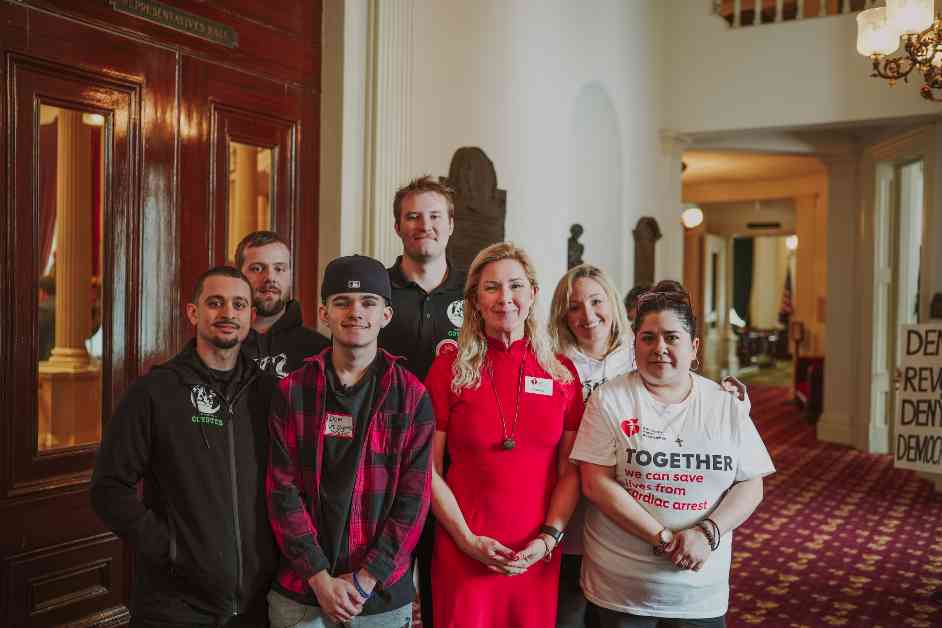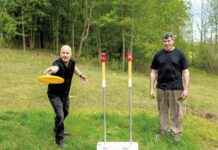Dominic Barcomb, a determined young sophomore at Milton High School, took a stand for heart safety in Vermont schools at the Statehouse in Montpelier on February 7, 2025. This brave teenager, accompanied by his mother and members of the VT Coyotes semipro basketball team, advocated for stronger heart safety measures after a life-threatening incident at a high school basketball game just a month prior. Dominic’s heart stopped during a game against Spaulding High School in Barre on January 2, but quick action by trained coaches and staff, who administered CPR and used a defibrillator, gave him a second chance at life.
The urgency of his experience fueled Dominic’s passion for ensuring that schools and sports events have appropriate cardiac emergency response plans and automatic external defibrillators (AEDs) on-site. “Just for people to know CPR, how to properly do it and how to make sure to keep everyone safe,” expressed the determined sophomore. His advocacy was met with support from around 30 individuals, sporting vibrant red tees, who gathered to rally behind the American Heart Association’s push for improved heart safety measures in Vermont schools.
The current statistics on cardiac arrests in Vermont are concerning, with a survival rate of 7.5%, falling below the national average of 10.2%. The National Institutes of Health reports that over 23,000 children under 18 face cardiac arrest outside of a hospital, and tragically, nearly 90% of these incidents result in fatalities. To address this critical issue, advocates are pushing for legislation that would mandate AEDs in schools, establish cardiac emergency response teams, and provide ongoing training in CPR and AED use.
Heart Health Legislation Advocacy
Tina Zuk, a lobbyist and spokesperson for the American Heart Association, emphasized the importance of bystander intervention in cardiac arrest situations. “Most people die of cardiac arrest because only 40% really ever get the bystander help that they need before rescue comes,” she explained. The window of opportunity in such emergencies is narrow, with survival rates dropping by 10% for every minute without CPR defibrillation. The proposed legislation aims to bridge this gap and improve outcomes for individuals facing cardiac events.
Dominic Barcomb himself now carries a defibrillator and pacemaker to monitor his heart rhythm continuously, ensuring that another cardiac arrest never occurs. His personal journey serves as a poignant reminder of the critical need for preparedness and quick action in cardiac emergencies. In a touching gesture, the University of Vermont men’s soccer team, known as the “Cardiac Cats” for their last-minute goals, was honored for their athletic achievements, underscoring the importance of heart health and well-being.
Health Network Leadership Hearings
Meanwhile, the University of Vermont Health Network faced scrutiny and criticism over service cuts and financial decisions during back-to-back hearings in the Vermont Statehouse. Network leaders, including president and CEO Sunny Eappen, defended their actions as necessary to comply with regulatory mandates and ensure the sustainability of patient care. Implementing service cuts was described as a challenging decision, driven by the need to navigate complex healthcare regulations and financial pressures.
While network leaders encountered skepticism from lawmakers in the House Committee on Health Care regarding service cuts and executive bonuses, their presentation in the Senate Committee on Health and Welfare was met with a warmer reception. The contrasting responses underscored the complexity of healthcare governance and the diverse perspectives on healthcare policy and management. Despite challenges and criticisms, network leaders remain committed to serving patients and communities with integrity and compassion.
The Vermont House recently passed a bill to adjust state spending midway through the fiscal year, reflecting a collaborative approach with Governor Phil Scott on budget priorities. However, debates around funding for the state’s motel voucher program highlighted ongoing tensions and divergent perspectives within the legislature. The bill, which includes additional funding for the motel program, signifies a commitment to addressing housing insecurity and supporting vulnerable populations in Vermont.
As legislative sessions progress and healthcare debates unfold, the stories of individuals like Dominic Barcomb and the strategic decisions of healthcare leaders shape the landscape of public health and policy in Vermont. The intersection of personal experiences, professional expertise, and legislative action underscores the interconnected nature of healthcare advocacy and governance in ensuring the well-being of all Vermonters.









